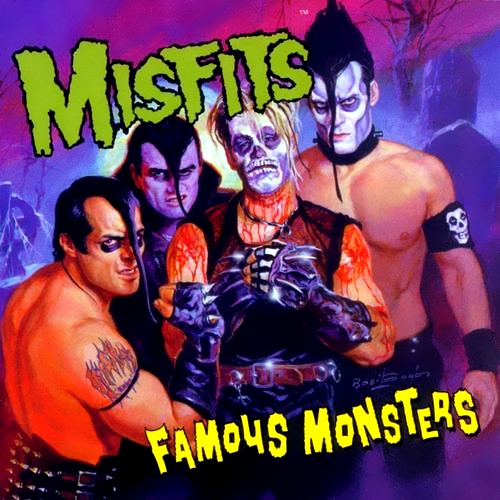 Ah, unrequited love. Boy signs his name on a love letter. Girl signs her name on a restraining order. I used to think that only humans experienced one-sided attractions, but lately I’ve realised that words do, too.
Ah, unrequited love. Boy signs his name on a love letter. Girl signs her name on a restraining order. I used to think that only humans experienced one-sided attractions, but lately I’ve realised that words do, too.
Sentences that mention Megadeth often also mention Metallica, but the reverse doesn’t apply: sentences that mention Metallica almost never mention Megadeth. One is far more famous than the other, so the attraction only flows one way. Likewise, sentences that mention The Hidden Fortress also usually mention Star Wars, but sentences that involve Star Wars almost never mention The Hidden Fortress.
This same rule applies to early 20th century weird fiction author Algernon Blackwood. It’s hard to find anything about him that doesn’t immediately compare him to HP Lovecraft. Perhaps not the strangest comparison in the world: they wrote about the alien, the eldritch, the unknowable. And they were both masters at keeping unspeakable terrors offscreen while not leaving the reader feeling cheated.
But Blackwood was different to Lovecraft. He wrote more ghost stories. He could be playful and mischievous. But most of all, his stories sometimes had a sense of quiet, unpretentious realism, as though he was writing about things that really could happen. His real life fascination with sorcery and the occult shines through in his fiction. When man is pitted against monster, Blackwood takes the side of the monster.
This collection has nine of Blackwood’s tales. “The Wendigo” and “The Willows” are very famous stories about brushes with the unknown. “The Man the Trees Loved” is a curious, whimsical offering – more similar to Lord Dunsany than anything in Weird Tales. “An Episode in a Lodging House” is about a renter using an ancient spell to bring down the boundary between worlds.
But my favorite two stories are two of the lessor known ones. “The Man Who Found Out” is a brilliant wind-up and release about a secret that causes anyone who learns of it to kill themselves. And the horrific “The Insanity of Jones” is about someone who begins to suspect that his boss murdered him in a past life. Both of these stories are tight, lean, and spellbinding.
Blackwood’s writing has aged well, and he’s well worth reading for reasons other than the fact that HP Lovecraft liked him. There’s more complete volumes of Blackwood’s stories, but this has enough to give a good introduction to his work.
No Comments »
 It’s true, I am nerdy. But not “rolls a twenty-one sided die while mumbling about dexterity” nerdy. We’re talking “Batman, isolated from the world in his Fortress of Solitude” nerdy. I’m nerdy to the extreme.
It’s true, I am nerdy. But not “rolls a twenty-one sided die while mumbling about dexterity” nerdy. We’re talking “Batman, isolated from the world in his Fortress of Solitude” nerdy. I’m nerdy to the extreme.
Just how nerdy am I? Well, let’s count the ways.
I own torrented copies of the following Star Wars films: The New Hope, The Emperor Strikes Back, A Phantom Menace, Assault of the Clones, and Return of the Sith. I still have to get that other movie (Revenge of the Jedi, or whatever), but I was running out of space on my DVR and needed to leave room for the Holiday Special.
Torrents, by the way, are secret hacking devices that access a site called The Pirate Bay using a hacker protocol called “IP Pinging”. The owner of The Pirate Bay then buys a copy of the thing you want, and streams it to your computer. Very cool. It’s easy to blur the line between right and wrong when you use a torrent, but that’s just part and parcel of living in a digital cyberpunk world. When I torrent something, I wear black sunglasses, and pretend there’s green text crawling up them like in the Wazowskis’ Matrix movies.
How batfucking insanely awesome are those movies? The special effects are just off the hook. In particular, the wire work is so intricate that it’s easy to forget that Neon, Brinity, and Murpheus are plastic mannequins. They look exactly like real people, especially when delivering lines like “if you take the blue suppository, you wake up and believe whatever you want to believe. If you take the red suppository, I show you how deep my rabbit hole goes.”
I discovered a plot hole, however. If Ne-Yo is the One, why don’t the machines just invent a Two?
I also love Star Track. There’s something about the character of Charles Xavier that really resonates with me, like we were destined to be friends but have been separated by a layer of cellulose. His moodiness. His cool. His quick wit, always ready with a snappy verbal riposte like “live long, and prosper.” Ouch, get some ointment for that burn! Star Fleck also makes it easy to see who the good and bad guys are. For example, the villains usually wear red shirts, so you can cheer when they die.
But that’s just the very peak of the bottomless abyss of my nerdiness. Harry Potter, The Big Bang Theory, Avatar (the cartoon, not the Peter Jackson movie), you name it, I’m there, wearing the T-shirt, getting to second base with the official licensed hugging pillow, bumping official nerd bands like Weezer on my Beats By Dre, holding forth on how it went to shit five episodes before the debut of the season 1 premier.
People ask me “hey, you’re so nerdy, don’t you ever find that it puts people off?” Well, I’d be lying if I said I don’t sometimes conceal the true depths of my geekiness, like how I read JRR Token’s Lords of the Ring books. Yeah, he ripped off the idea of elves and orcs from Dungeons and Dragons, but who cares, they’re so much fun! Lately I’ve been learning Sindarin, the Elvish language. Here’s some of my homework: ??????????. Get on my level.
No Comments »
 There are no rules. Legal battles. Turning forty. A new singer. Sophomore slump. The seminal monster punk band takes all these ingredients and turns it into their best album ever.
There are no rules. Legal battles. Turning forty. A new singer. Sophomore slump. The seminal monster punk band takes all these ingredients and turns it into their best album ever.
A bold claim, but Famous Monsters backs it up. It’s the same great Misfits songwriting, now with modern production, a more expressive singer, and an even greater attention to melody and violence. Where Walk Among Us fired a machine gun at random, Famous Monsters takes precise aim and scores a perfect spread at a duly licensed gun-range because safety is important and these guys have Roth IRAs to manage now, doncha know.
Okay, the early spontaneity is missing, but the band sounds so good now it doesn’t matter. Doyle’s guttural guitars merge with Jerry’s bass to create a crushing bulldozer of sound, with Dr Chud’s drumming being downright inhuman(oid?). Replacement singer is Michale Graves is an astonishing find. His voice is rich and gleamingly smooth, like punk rock’s answer to Caruso. The band really should have worked harder to hold on to him.
The run of songs that starts from track 3 and finishes with track 7 is incredible, from the cruising power and energy of “Dust to Dust” and “Scream” to the coked-up thrashing of “Witch Hunt” and “Crawling Eye”, this is the stuff the Misfits are all about. Essential!
The later songs aren’t as strong, but they show the band’s more diverse side. Nobody these days knows how to mix punk with anything except ska and pop, but the Misfits would always convincingly combine their signature style with genres like NWOBHM and surf rock. Here we get a mini doo-wop epic called “Saturday Night”, and a plodding Cure-esque album closer called “Helena”
It has a few too many songs with few too little ideas, but that’s something you get used to with punk rock. Grognards will never accept any version of the band that doesn’t have Danzig behind the microphone, but everyone else will probably find Famous Monsters to be the strongest and most consistent Misfits album.
No Comments »
 Ah, unrequited love. Boy signs his name on a love letter. Girl signs her name on a restraining order. I used to think that only humans experienced one-sided attractions, but lately I’ve realised that words do, too.
Ah, unrequited love. Boy signs his name on a love letter. Girl signs her name on a restraining order. I used to think that only humans experienced one-sided attractions, but lately I’ve realised that words do, too. 

